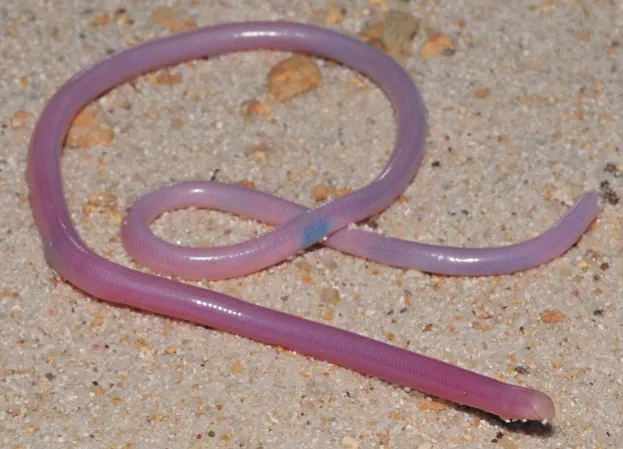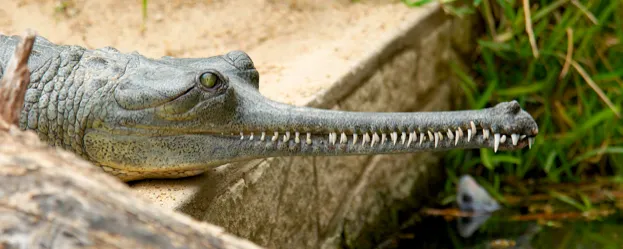These unique animals, as well as chameleons as small as a human thumbnail among many others, make an appearance on a pioneering programme run by Zoologial Society of London (ZSL).
The Evolutionary Distinct and Global Endangered (EDGE) list uses a complex formula to highlight species that are not only heading for extinction, but are particularly evolutionarily distinct.
“Reptiles often receive the short end of the stick in conservation terms, compared with the likes of birds and mammals,” says EDGE Reptiles co-ordinator Rikki Gumbs.
“However, the EDGE Reptile List highlights just how unique, vulnerable and amazing these creatures really are. From the world’s largest sea turtles to a blind species of snake found only in Madagascar, the diversity of EDGE Reptiles is breath-taking.”

The Madgascar blind snake is on the EDGE Reptile list, at rank 3 © Jörn Köhler
One of the more iconic species on the list is the Mary River turtle, which can stay underwater for up to three days by breathing through its reproductive organs.
12 of the top 15 animals on the list are either turtles or tortoises, with the Madagascan big-headed turtle taking the number one spot with an EDGE score higher than any amphibian, bird or mammal to be featured on any list to date.
The EDGE list was first introduced in 2007, and have previously been published for amphibians, birds, corals and mammals.

“Just as with tigers, rhinos and elephants, it is vital we do our utmost to save these unique and too often overlooked animals,” comments Gumbs.
“Many EDGE Reptiles are the sole survivors of ancient lineages, whose branches of the Tree of Life stretch back to the age of the dinosaurs.”